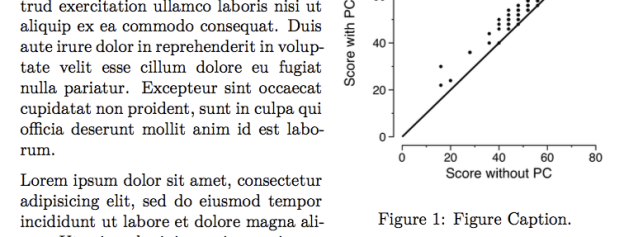About a year and a half ago, I wrote a series of pandoc filters designed to facilitate writing chemistry in pandoc. Specifically, I was looking to solve a few problems:
- Not surprisingly, there is no native support for alternate figure types (schemes, charts, etc.) in pandoc.
- Pandoc takes advantage of LaTeX’s native captioning. This has the side effect of adding labels (“Figure X”) to captions in LaTeX/pdf output, but not in other formats (e.g., html, Word). I always found this mildly irritating since the same markdown is rendered differently in different formats.
- Pandoc doesn’t have native cross-referencing support (although I suspect that will change down the road).
- Pandoc doesn’t natively support the “wordwrap” LaTeX package, so text does not flow around figures in LaTeX/pdf output. In principle, I don’t have a problem with this, but if you’re writing with a hard page limit it’s a huge problem.
The cross-referencing issue is a big one, and not surprisingly there are excellent filters already available that provide this functionality (e.g., pandoc-fignos, pandoc-numbering). However, for the specific combination of problems faced by a chemist trying to write reasonable looking chemistry, I didn’t find solutions that exactly met my needs.




